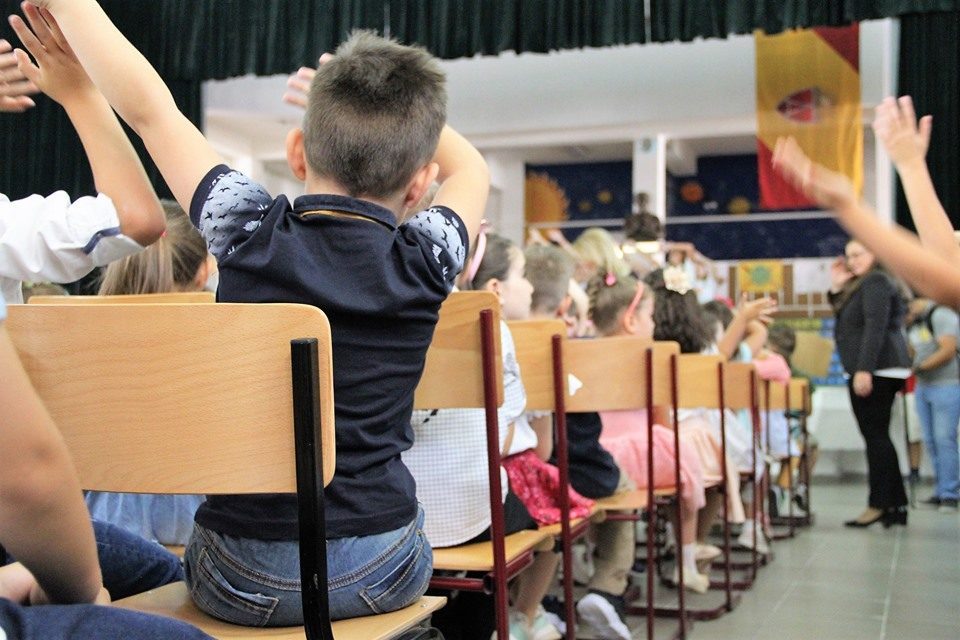Young people in the Europe and Central Asia region are being provided with the opportunities needed to grow into productive adults, thanks to continued investments in health and education during their childhood and teenage years, says the latest update of the World Bank’s Human Capital Index (HCI), which measures pre-pandemic human capital outcomes around the world.
However, the Covid-19 pandemic is threatening the gains made so far, as governments struggle to maintain health and education services in the face of restrictions to protect public health, including school closings.
According to the Human Capital Index, a child born in Macedonia today will be 56 percent as productive when she grows up if she enjoyed quality education and health care. This is lower than the average for Europe & Central Asia region and upper middle-income countries. Between 2010 and 2020, the HCI value for Macedonia increased from 0.54 to 0.56.
A child in Macedonia, who starts school at age 4, can expect to complete 11 years of pre-primary, primary and secondary school by age 18. However, when years of schooling are adjusted for quality of learning, this is only equivalent to 7.3 years, i.e. a learning gap of 3.7 years. Regarding health outcomes, the report shows that 99 out of 100 children born in Macedonia survive to age 5.
“Macedonia has made significant efforts since 2010 to improve education and health outcomes, but still faces challenges. To improve its human capital, the country should invest more in quality and equity of the education,” said Massimiliano Paolucci, World Bank Country Manager for Macedonia. “Also, it is very important to strengthen prevention of non-communicable diseases by improving screening, management and control.”
Of the 48 countries in Europe and Central Asia included in the HCI 2020, 33 are among the upper-third in the world, and almost all are in the top half. These findings are broadly in line with the relatively high incomes of countries in the region, with richer countries able to invest more in basic education and health services than poorer countries. However, there are significant variations within the region. Among the region’s emerging and developing economies, a child born in Poland can expect to achieve 75 percent of the productivity of a fully educated adult in optimal health. In contrast, a child born in Tajikistan, can expect to achieve only 50 percent productivity.
“Governments in Europe and Central Asia have done well in prioritizing investments in health and education, which are key drivers of growth and development. The challenges unleashed by Covid-19, however, require an even stronger policy response, including greater use of technology to improve service delivery and enhanced social assistance programs, to ensure that people receive quality education and health care,” said Anna Bjerde, World Bank Vice President for the Europe and Central Asia region.
This year’s report includes a decade-long analysis of human capital development from 2010 to 2020 in 103 countries. Albania, Azerbaijan, and Russia are among the top 10 global improvers in progress made on health and education.
The World Bank is helping governments develop long-term solutions that will build more resilient, inclusive economies in the post-pandemic era. Examples of such work include Ukraine, where the World Bank is strengthening the country’s health response to Covid-19, including modernizing emergency departments and stroke units in 40 hospitals and training thousands of Ukrainian doctors. In Turkey, the World Bank is supporting the development of TV and digital content for blended teaching and learning when schools reopen.
Overall, health outcomes in the region are relatively good by global standards. Over the last 10 years child mortality rates have dropped considerably, with Azerbaijan, Kazakhstan, and Turkey posting the largest improvements in child mortality. Similarly, child stunting rates have also dropped considerably, most notably in Albania, Azerbaijan, Macedonia and Turkey.
Adult mortality rates have also declined significantly, with Kazakhstan, Russia, and Ukraine posting the best improvements. However, adult mortality rates remain high in several countries.
The region’s basic education outcomes offer a mixed picture, although the region performs well by global standards. Over the past decade, expected years of schooling have increased, with Azerbaijan, Albania, Montenegro, Poland, and Russia making the largest gains – mainly due to improvements in secondary school and pre-primary enrollments. However, expected years of schooling also declined in a number of countries, including Bulgaria, Moldova, Romania and Ukraine.
Education quality, on average, has not improved across the region in the past decade. Countries that have seen declines in education quality include Bulgaria and Ukraine. Countries that made improvements in education quality include Albania, Moldova, and Montenegro.
Globally, the HCI report also calls for better measurement of data to enable policy makers in countries to target support to those who are most in need.
The World Bank’s HCI looks at a child’s trajectory, from birth to age 18, on such critical metrics as child survival (birth to age 5); expected years of primary and secondary education adjusted for quality; child stunting; and adult survival rates. HCI 2020, based on data up to March of this year, provides a crucial pre-pandemic baseline that can help inform health and education policies and investments for the post-pandemic recovery.





Comments are closed for this post.